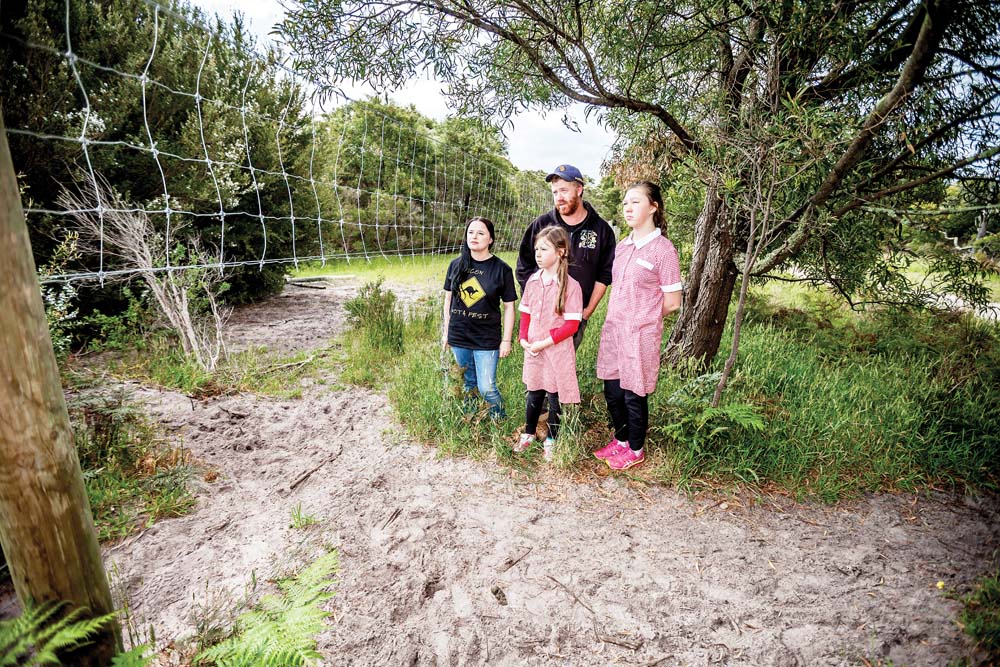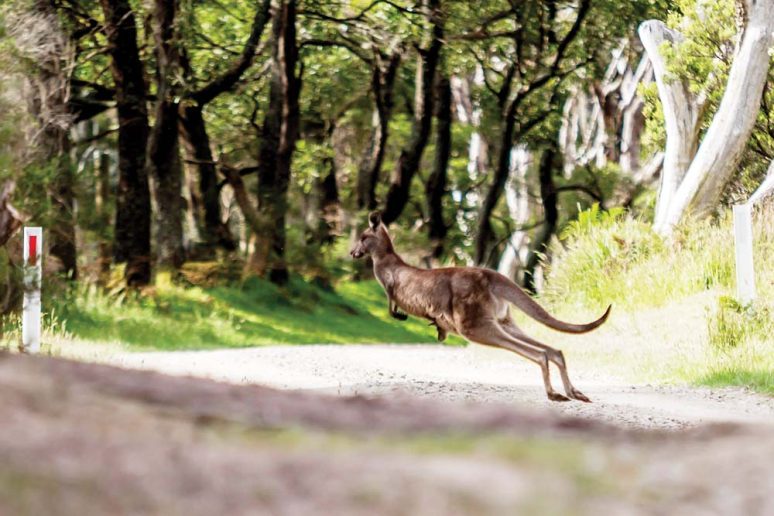
A Mt MARTHA-based animal rights group has protested to the state government over what it calls “unethical” kangaroo culls at a Cape Schanck property.
Australian Wildlife Protection Council secretary Eve Kelly wrote to Energy, Environment and Climate Change Minister Lily D’Ambrosio saying an Authority to Control Wildlife permit to kill kangaroos at a property on Patterson Rd was causing kangaroos to “injure themselves and die horribly fleeing the gunfire [while] trapped in sections of the land”.
Ms Kelly included photographs of large holes in fences – said to have been cut by vandals – which allow the kangaroos to access the land on which they are killed.
“We have serious concerns about the approval of this permit and the reasons given for why it was/is needed,” she said, referring to a Department of Environment, Land, Water and Planning statement that: “The owner of the property had tried other means to keep the kangaroos off the property, including kangaroo fencing, however, these were not effective.”
Ms Kelly said a neighbour told her that the holes “had been there for over a year”.
“Therefore, [DELWP’s] statement that kangaroo fencing was tried but ineffective, is untrue,” she said.
“A fence is not effective if there are large holes in it. The fencing is the landowner’s responsibility and the integrity of the fencing should have been assessed before a [cull] permit was issued.
“The holes are allowing the kangaroos to access to the land, then when the cull takes place they are injured, fleeing the gunfire, and die horribly trapped in sections of the land. This is unethical.
“Why was [the cull] permit issued before the landowner made all reasonable attempts to fix the fence? Did a DELWP inspector attend the entire property and inspect the exclusion methods before issuing a permit to kill this native wildlife?”
The owner of the property, GSA Bloodstock, was called for comment.
DELWP’s environment, natural resources and fisheries regional manager Merryn Kelly said “all practical non-lethal control options must be exhausted before a lethal control permit is considered”.
She said an independent panel of experts (IPE) had considered a kangaroo management plan for the property in discussions with the applicant and neighbours.
“The owner … had tried other means to keep the kangaroos off the property, including the fencing,” she said. “DELWP is aware of the holes … which have come about from repeated vandalism.”
She said the fence was “one of the options that was exhausted” before the cull permit was issued.
“The fence was cut before the permit was applied for, and the IPE did not recommend repairing [it] … on the basis of the high cost to the landowner and likelihood of repeat vandalism.
“Also, the IPE stated [that] repairing the fence would not resolve the broader issue of kangaroo displacement in the area.
“The kangaroos have grazed the pasture of the property to the extent that its capacity to hold stock has been greatly reduced and is causing the landowner serious economic loss.”
Ms Kelly said the panel of experts since 2012 had advised DELWP on “complex culling applications and wildlife management issues”. It consists of experts in animal welfare, veterinary science and wildlife management.
But the Australian Wildlife Protection Council queried the granting of the cull permit because of “serious economic loss”.
“What proof was given to DELWP by the landowner of the loss that he incurred?” the group’s Ms Kelly asked.
“What is the land being used for? What type of pasture is on the land and needed to feed stock animals? What pasture is being eaten by kangaroos? What pasture is being eaten by rabbits?”
DELWP did “not require the storing of culled animals for count confirmation due to the inherent health and disease risks of such a practice”, the department’s Merryn Kelly said.
“DELWP manages the [cull] process through continued discussions with the permit holder [who] must comply with the conditions.”
First published in the Southern Peninsula News – 31 October 2017




